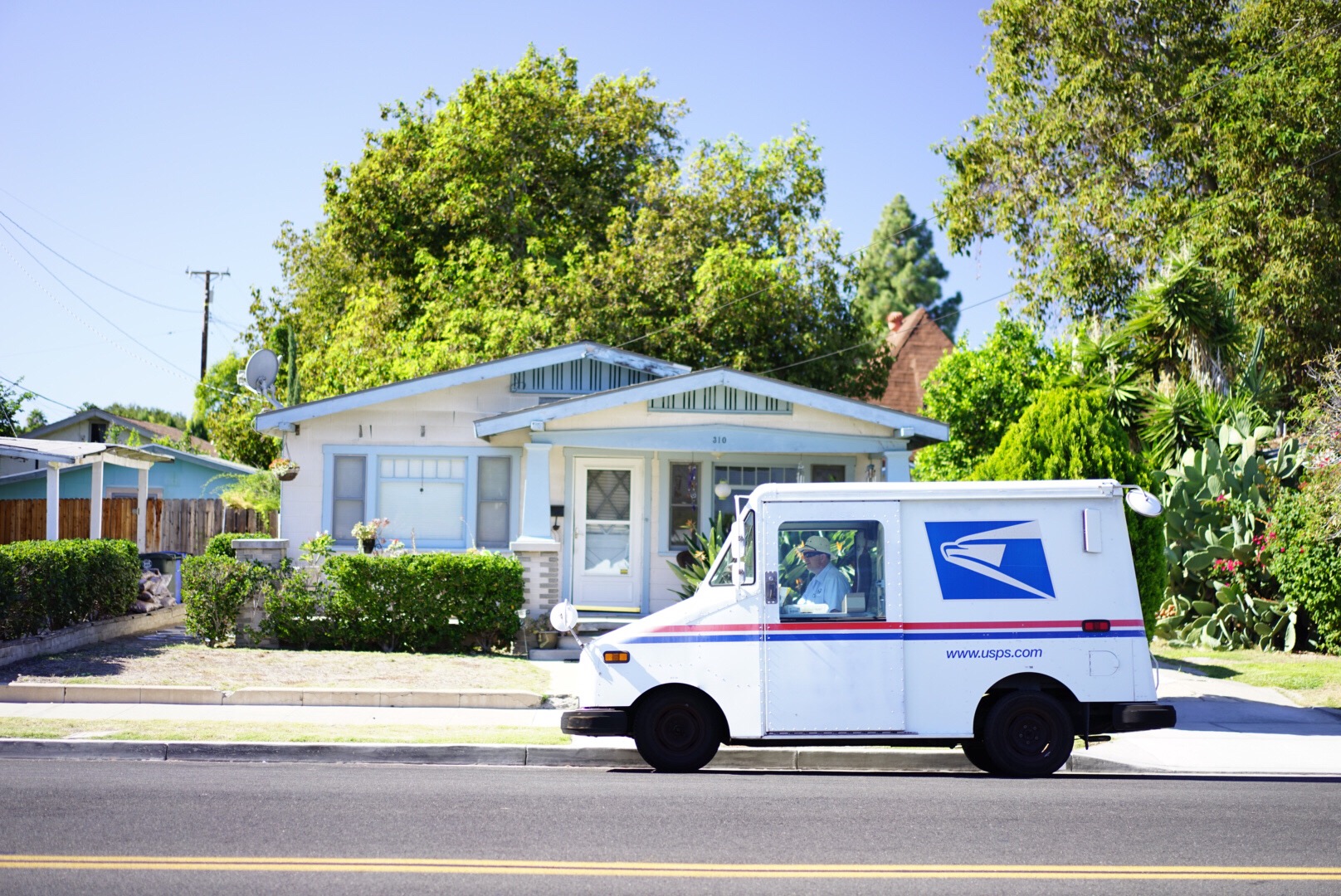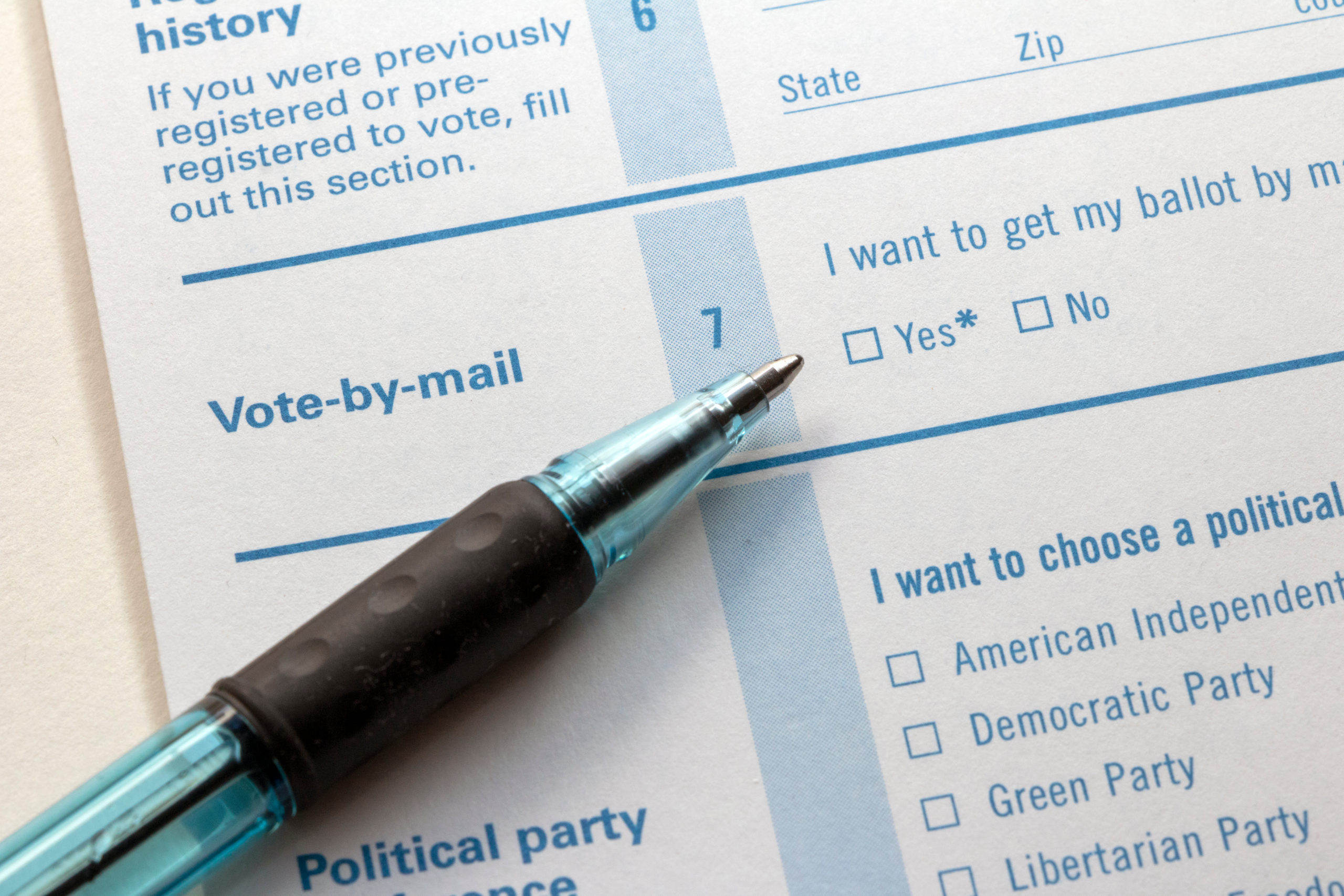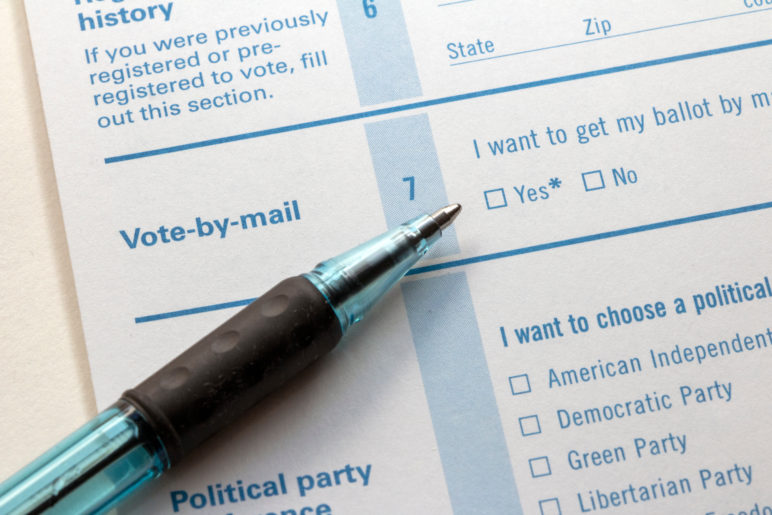As the United States barrels toward a presidential election in November, elections officials are on the front lines of COVID-19 response, charged with keeping elections safe—protecting voters and poll workers, safeguarding the right to vote, and maintaining trust in the process. A record number of voters will vote by mail or absentee this year. Local officials are scrambling to adjust to a flip-flopped world: in a typical year in most states, most voters come in-person to the polls while a much smaller number of people vote absentee, but this November most Americans will want to safely vote at home, while a far smaller share than usual will choose to come to a polling place (or find they have no other choice). Poll workers too will opt to stay home to protect their health.
Luckily, many American states have been operating elections this way for years, with most or all voters filling in their ballots in the convenience of their home. In our new 50-state (plus Washington, DC) guide to Vote By Mail, Sightline has identified a dozen tried and tested recommendations for keeping elections safe, from experienced Vote By Mail states like Oregon, Washington, Colorado, and Utah. We’ve tailored these recommendations to each state’s particular context and needs—you can access each state’s report here.
VOTE BY MAIL FOR SECURE ELECTIONS IN 2020
Our state-by-state guides outline all 24 recommendations. Here are six steps—each important and straightforward to implement—that every state should prioritize right now.
1. Allow any voter to request an absentee ballot
The first crucial step to keep elections safe this November is to make sure that voters can access a ballot without risking exposure to COVID-19. Most states (34 states and DC) allow any voter who chooses to vote at home. These states either mail a ballot to everyone (as in Colorado, Utah, and others) or allow any voter to request an absentee ballot (as in Florida, Georgia, and others). This is an easy way to give voters the freedom to choose to vote in the safety of their home if they wish.
Unfortunately, 16 states don’t give voters this choice. These states only allow voters to request an absentee ballot if they have a valid “excuse” for wanting to vote absentee, such as being physically out of the state on Election Day, or have a physical disability or a medical reason, depending on the state. The good news is that 13 of these 16 states have temporarily waived or weakened the “excuse” requirement this year, allowing voters to request an absentee ballot if they have reason to fear exposure to the coronavirus. Only Arkansas, Mississippi, and Texas don’t consider a global pandemic to be a valid reason for voters to request an absentee ballot in 2020.
Requiring voters to provide an “excuse” for wanting to vote absentee is an unnecessary barrier to citizens safely exercising their right to vote, especially during a pandemic. Whatever their reasons, whether it’s wanting more time to research the candidates, not being able to afford to take time off work to vote in person, or wanting to keep their community safe during a pandemic, all voters should have the option to safely vote at home.
All voters should have the option to safely vote at home.

Arkansas, Mississippi, and Texas could temporarily waive their “excuse” requirements through two mechanisms. Their legislatures could change the law. Or, using their emergency powers, the governors of these three states could suspend the relevant regulatory statutes to temporarily waive the “excuse” requirement.
The 13 states that have temporarily broadened access to absentee ballots to keep elections safe this year (Alabama, Connecticut, Delaware, Indiana, Kentucky, Louisiana, Massachusetts, Missouri, New Hampshire, New York, South Carolina, Tennessee, West Virginia) could make that change permanent, giving their citizens more options to exercise their right to vote without the need for emergency measures.
2. Mail absentee application forms to all registered voters
Once all voters are allowed to request an absentee ballot, states can protect themselves against chaos at the polls on Election Day by mailing absentee application forms to all registered voters. This is proven to increase turnout while reducing crowds. In advance of its April 2020 primary, several counties in Wisconsin mailed absentee ballot applications to all registered voters in their county. Voter turnout was 67 percent (high turnout for a primary), and 90 percent of the ballots cast were absentee, leaving polling places less crowded for the people who chose to vote in person.
Secretaries of State can coordinate this effort and ensure all voters in their state have an equal opportunity to vote absentee. In the absence of state-level leadership, local officials can provide funding and direction for local elections officials to mail application forms to voters in their jurisdiction.
3. Coordinate with THE UNITED STATES POSTAL SERVICE
As more Americans opt to vote absentee this year, election officials want to make sure their ballots get delivered and returned in a timely manner. The United States Postal Service (USPS) will see an unprecedented surge in mailed ballots and is preparing to handle them all smoothly. Local elections officials can help prepare by contacting their local USPS election mail coordinator to discuss the design, timing and volume of election materials. Election administrators can also discuss the date, time, and location for delivery of ballots to the post office to ensure that the post office is prepared. For example, before each election, election administrators in King County, Washington send a letter to USPS alerting them to the number, type, and timing of ballots they expect to deliver.
Everything is more difficult during a pandemic. Providing USPS some notice about how many ballots they can expect to deliver in a jurisdiction can give that jurisdiction’s voters a better chance of getting their ballots in a timely manner.

Options to vote from home will help keep elections safe, including reducing crowds at in-person polling places.
4. Use a comprehensive system to track ballots
Voters who have not voted absentee before may be wary of an unfamiliar system. And election officials may dread a situation like Wisconsin experienced this spring where ballots that election officials mailed got caught in limbo in the postal system and never made it to voters. Comprehensive ballot tracking can make voters and officials alike feel more confident, can enhance election security, and help avoid mishaps.
Many American jurisdictions already use comprehensive ballot tracking in partnership with companies like Ballot Scout and BallotTrax. They use intelligent barcodes to track every ballot and envelope, notifying voters every step of the way. This service increases transparency and accountability because voters can easily track when their ballot is in transit, received by election officials, and counted. The incidence of stolen ballots or tampering is negligible, but tracking each ballot’s progress minimizes any risk.
By implementing a comprehensive ballot tracking system, states can avoid problems such as those Wisconsin experienced in its April 2020 primary. If Wisconsin election officials had had comprehensive secure ballot tracking in place, they would have seen that thousands of mailed-out ballots had gotten stuck in mail processing centers. Getting this information would have given officials the opportunity to contact USPS and address the problem. Instead, thousands of voters were denied the ability to safely vote at home even though they had requested their ballot in time.
5. Allow early in-person voting options
Even though many voters will opt to vote safely at home if given the choice, some voters prefer to vote in-person. Maybe it’s their tradition, or they feel more comfortable turning in their ballot directly to election workers, or maybe they forgot to request their absentee ballot in time. To give voters choices and keep elections safe for in-person voters by avoiding risky crowds on Election Day, states can allow voters to vote early in-person. In other words, open up polling places a few weeks before Election Day so that voters can trickle through at their convenience and avoid the big crowds and lines on a single day.
Twenty-four states (and DC) already allow early in-person voting. In 12 of the 26 states that do not have early in-person voting, the governor possesses emergency power to extend that choice to voters, so the governor could make this change without waiting for the legislature. In the remaining 14 states, (Kentucky, Minnesota, Wisconsin, and others) lawmakers would need to act to give local election officials the option to open up polls and give voters the option to vote in person without risking contracting the virus in a big crowd or long line.
6. Allow counties to accept ballots postmarked on Election Day
Imagine a hypothetical worst case scenario: An unprecedented number of voters have chosen to vote from home due to fear of contracting COVID-19. Election officials low on funds are not able to mail those ballots out as quickly as they would have liked, so voters receive their ballots at the last minute. Many put their ballots in the mail on Election Day, thinking because they usually voted in person on Election Day everything should be fine. Other voters got their ballots in the mail several days ahead of time, but the USPS, hampered by budget woes and understaffed from employees sick with COVID, is unable to process all the ballots in time to deliver them by Election Day. Election officials are forced to throw away otherwise valid votes because they received them too late. With so many uncounted ballots, people start to question the legitimacy of the election results.
Now imagine the above scenario with one small change: as a measure to keep elections safe this year, counties are allowed to accept ballots postmarked on Election Day (and received within a week or 10 days). With this change, the tension in the above scenario evaporates. Any voter who got their ballot in the mail by Election Day can rest assured their vote will be counted. Results will take a few extra days to count, but Americans’ voices will be heard.
Only twelve states (and DC) accept ballots postmarked by Election Day. Elections in these twelve states will likely be fine even in the event of delays. The remaining 38 states could mitigate the risk of lost votes and loss of faith by counting ballots postmarked on Election Day, either through legislative action or activating existing executive emergency powers.
Protect the right to vote in 2020 and beyond
To keep elections safe—and safeguard not only voters but trust in democracy—in the time of the pandemic, state lawmakers, secretaries of state, and local election officials can implement these six suggestions. Going forward, states can do even more to run safe, secure elections. For more details on what your state could do, click here.
VOTE BY MAIL FOR SECURE ELECTIONS IN 2020
Kristin Eberhard, Director, Climate and Democracy, is a researcher, writer, speaker, lawyer, and policy analyst who spearheads Sightline Institute’s work on democracy reform and on climate action. She researches, writes about, and speaks about elections systems and democracy reform, with particular expertise on Vote By Mail and proportional representation. Eberhard lives in Oregon, an all-Vote By Mail state. She is available to discuss tested, safe, fair COVID-19 election practices, state by state. Find all Eberhard’s latest research here. For interviews, speaking engagements, and media inquiries, contact Anna Fahey.












Taylor Hansen
It’s good to know that voter turnout was 67% for a primary. I’m wanting to vote and have my voice heard, but I’m worried about going to voting places and getting COVID. I’ll be sure to check other options for voting, like mailing voting. https://provotesolutions.com/elections/